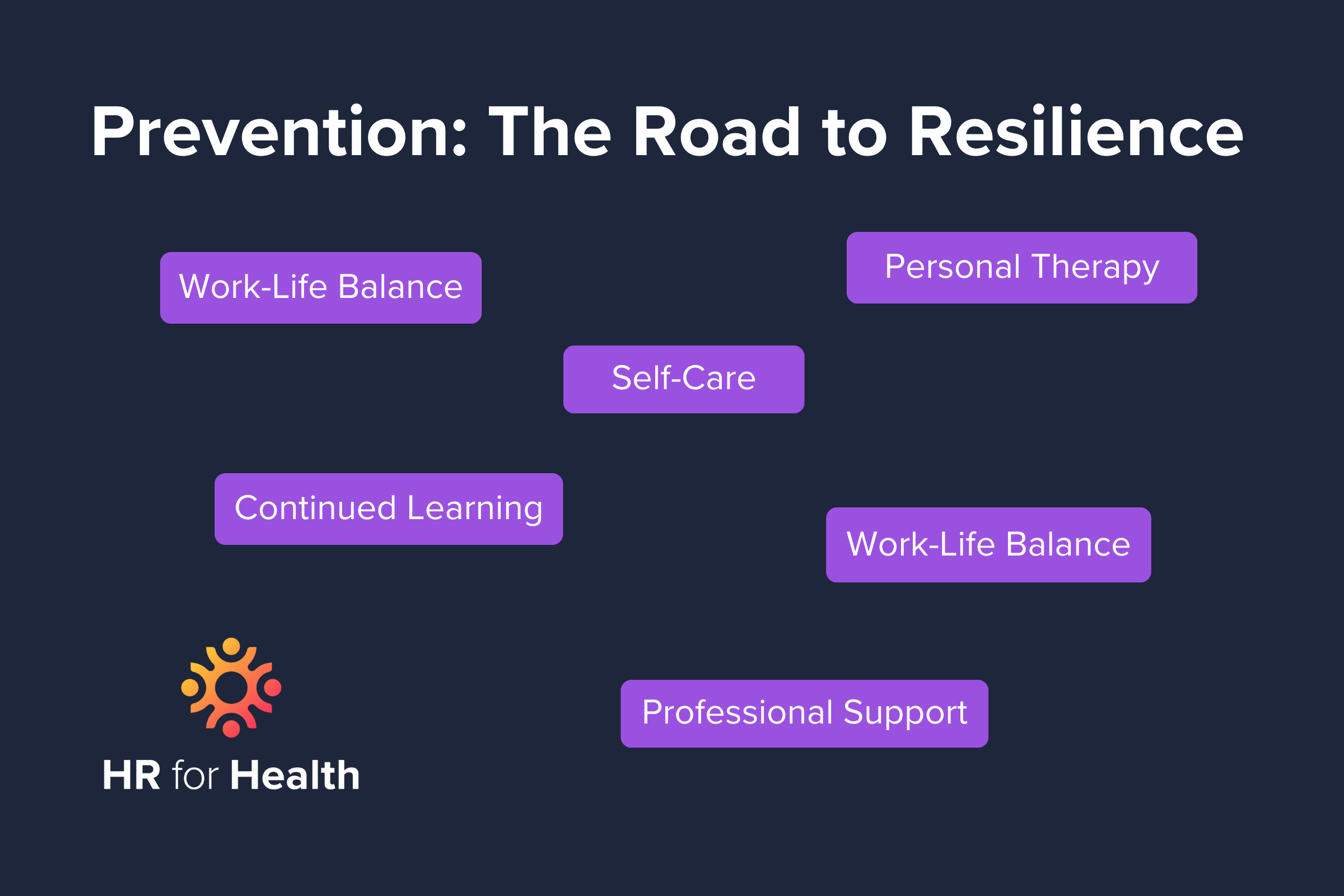As we peel back the layers of the multifaceted mental health sphere, an unseen struggle emerges from the shadows – Therapist burnout. While mental health professionals are the lifelines for countless individuals seeking solace, they too can feel overwhelmed, exhausted, and burnt out. Today, we delve deep into the world of therapist burnout, its warning signs, causes, and preventative measures.
Recognizing the Warning Signs
Therapist burnout can take many forms, varying from subtle changes to drastic shifts in behavior. Some common warning signs may include:
- Chronic fatigue
- Insomnia
- Diminished interest in activities previously enjoyed
- Feelings of dread about work
- Detachment from patients
- Lowered immunity
- Increased irritability
- A sense of restlessness or lack of concentration.
Unmasking the Risk: Burnout is More Common Than You Think
Burnout, a state of chronic physical and emotional stress, isn’t exclusive to high-stress jobs. Therapist burnout is a form of “compassion fatigue.” When therapists encounter the traumatic experiences of others, they often feel emotionally drained. No mental health professional is immune, with studies revealing a burnout prevalence rate of 21-67% amongst professionals in this field.
Feeling Overwhelmed: The Double-Edged Sword
Mental health professionals often shoulder the hidden burden of others’ emotional pain, which can rapidly feel overwhelming. The ability to empathize, a vital tool in their arsenal, can ironically act as a double-edged sword. Vulnerability to vicarious trauma and subsequent emotional exhaustion can result in feeling overpowered, making professionals susceptible to burnout.
Understanding Compassion Fatigue
Compassion fatigue occurs when therapists or caregivers become exhausted and overwhelmed because of prolonged exposure to individuals experiencing suffering. This can happen when they have been in proximity to suffering individuals for an extended period. This condition is common in jobs such as therapy, counseling, nursing, and social work. Professionals in these fields regularly help people who are experiencing trauma, pain, or emotional distress.
People first used the term “compassion fatigue” in the 1980s to describe burnout in individuals working in caring professions. It means losing empathy and compassion, feeling tired and detached, and not being able to give good care. Compassion fatigue can manifest in various ways, including physical, emotional, and cognitive symptoms.
Physically, therapists experiencing compassion fatigue may feel constantly fatigued, have difficulty sleeping, or experience frequent headaches or other physical ailments. Emotionally, they may feel overwhelmed, irritable, or emotionally numb. They may also experience a sense of hopelessness or cynicism, leading to a decreased sense of personal accomplishment in their work. Cognitively, therapists may have difficulty concentrating, making decisions, or maintaining focus, which can significantly impact their ability to provide quality care.
Compassion fatigue connects to burnout, a state of chronic exhaustion caused by long-term work stress. In fact, experts consider compassion fatigue as a significant predictor of burnout. If left unaddressed, compassion fatigue can have serious consequences for both the therapist and the individuals they are trying to help. It can lead to decreased job satisfaction, increased absenteeism, and even a higher risk of making errors or providing suboptimal care.
Prevention: The Road to Resilience
Preventing therapist burnout is a responsibility shared by both mental health professionals and their employers. Here are few ways to stave off therapist burnout:
- Work-Life Balance: Ensuring a healthy separation between one’s professional and personal life can act as a buffer against burnout.
- Self-Care: Engaging in physical activities, meditation, and regular relaxation techniques can prove beneficial.
- Peer Support: Having regular discussions with peers, sharing experiences, and lending emotional support can add a layer of resilience.
- Professional Support: It is vital institutions provide adequate support to therapists, such as manageable caseloads, regular supervision, and mental health days.
- Continued Learning: Therapists should continuously explore resources that enhance their knowledge and skills, especially in stress management.
- Personal Therapy: Practicing what they preach, therapists should consider seeking personal therapy to manage their own emotional wellbeing.

Along with these tips, setting boundaries is crucial for therapists to maintain their well-being and prevent burnout. By establishing clear limits, therapists can avoid overextending themselves and ensure they have enough time and space to recharge. This is especially important in a profession that demands emotional and mental energy.
Long, unpredictable hours are significant contributors to burnout. HR for Health can help implement flexible scheduling options, allowing healthcare staff to balance their personal and professional lives better. This includes shift swapping, varied part-time schedules, and accommodating individual life commitments.
To effectively set boundaries, therapists can seek support from various sources. Colleagues, supervisors, and professional groups can provide a valuable network of support. These individuals understand the unique challenges therapists face and can offer guidance and advice on how to navigate difficult situations.
One way therapists can benefit from seeking support is by discussing their emotions with others. Sharing their experiences and feelings with trusted colleagues or supervisors can provide a sense of relief and validation. It allows therapists to process their emotions and gain perspective from others who have faced similar challenges.
Additionally, exchanging stories with fellow therapists can be a valuable learning experience. By sharing their experiences, therapists can gain insights into different approaches and strategies that have worked for others. This can help them expand their knowledge and enhance their therapeutic skills.
Furthermore, seeking support from professional groups can provide therapists with a broader perspective. These groups often organize workshops, conferences, and training sessions where therapists can learn from experts in the field. Connecting with these communities helps therapists stay current on research and best practices, enhancing their effectiveness.
In summary, setting boundaries is essential for therapists to maintain their well-being and prevent burnout. Seeking support from colleagues, supervisors, and professional groups can provide therapists with the necessary resources to navigate challenges and recharge. By discussing their emotions, exchanging stories, and gaining insights from others, therapists can enhance their therapeutic skills and continue to provide effective care to their clients.
Final Thoughts
Therapist burnout is a pressing concern that highlights a larger problem within the mental health care system. These dedicated professionals play a crucial role in helping individuals heal from emotional wounds and develop resilience. However, the demanding nature of their work, coupled with the lack of support and resources, often leads to burnout.
Therapists are the unsung heroes of mental health care, working tirelessly to provide support and guidance to their clients. They hear their clients’ fears, traumas, and struggles, providing a safe place to understand emotions and seek healing. Therapists can be emotionally burdened by their clients. They often lack a way to take care of their own emotions.
Moreover, therapists face numerous challenges within the mental health care system that contribute to burnout. They often have heavy caseloads, with limited time and resources to adequately address the needs of each client. Therapists may feel overwhelmed and frustrated when trying to give good care within limited time and dealing with administrative tasks.
Therapists may face problems with insurance that limit the number and type of therapy sessions they can provide. This can create a sense of powerlessness and hinder their ability to provide the best care possible. Furthermore, therapists may also face financial pressures, as the mental health care system often undervalues their expertise and compensates them inadequately.
To address therapist burnout, it is crucial to prioritize their well-being and provide them with a supportive network. This includes implementing policies and practices that promote self-care and work-life balance. Therapists should have access to regular supervision and consultation, allowing them to process their emotions and seek guidance when needed.
Giving therapists opportunities for professional growth and ongoing education can help them stay informed about new research and therapy methods. This, in turn, improves their effectiveness and job satisfaction.
Furthermore, mental healthcare organizations and institutions must advocate for fair compensation and recognition of therapists’ expertise. This involves challenging the prevailing stigma surrounding mental health and highlighting the invaluable contributions therapists make to society. By valuing and helping therapists, we can make a better mental health care system that benefits therapists and their clients.
In conclusion, therapist burnout is a systemic issue that demands immediate attention. Therapists play a crucial role in mental health care. It is important to prioritize their well-being. By doing so, we can create a better environment for these unsung heroes.
After all, a well-nurtured therapist is the cornerstone of a robust mental health system. Let’s remember, our therapists, just like us, are human.


